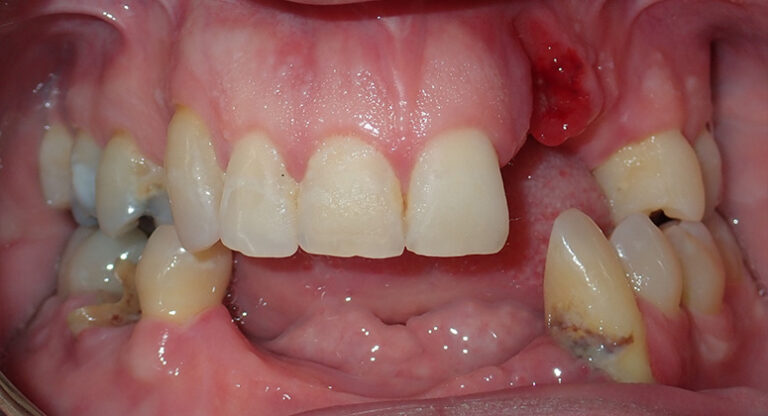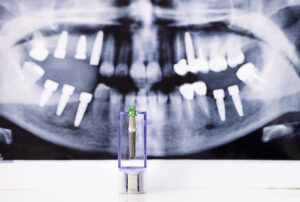What Are the Risks of Delaying Dental Implants?
Delaying dental implants can trigger a series of complications that damage jawbone integrity and tooth alignment. Missing teeth lose the natural stimulation required to maintain bone density, leading to gradual bone resorption. Reduced jawbone volume may compromise implant stability, and the gap can encourage adjacent teeth to drift, resulting in bite misalignment. Prolonged delays also increase the risk of periodontal issues, including infections that might become systemic. Studies have suggested that untreated gaps can decrease bone density by 20–30% over a few years, which may require further procedures like bone grafting or sinus lifts, adding to treatment complexity and cost.
How Does Postponing Affect Jawbone Health?
Jawbone health depends on the continuous stimulation provided by natural tooth roots or implants. Without this stimulation, the bone undergoes resorption and loses density. This deterioration undermines the support required for successful implant integration, often necessitating complex augmentation procedures. Early implant placement is therefore crucial for maintaining long-term stability.
What Are the Increased Risks of Tooth Loss and Shifting?
When a tooth is missing, the surrounding teeth may drift into the vacant space, leading to malocclusion and bite misalignment. Even minor shifts can complicate future restorative work and result in excessive force on adjacent teeth, increasing the risk of decay and periodontal disease. Over time, these changes can diminish chewing efficiency and detract from your smile.
Can Delaying Implants Lead to Gum Disease or Infection?
Yes, postponing implant placement allows gaps to collect food particles and bacteria, creating a breeding ground for biofilm. This environment can trigger gum inflammation and the formation of periodontal pockets that are hard to maintain with proper oral hygiene. The resulting infections may become chronic, complicating any future dental treatments. Timely implant placement, along with careful hygiene, serves as a preventive measure against these complications.
Why Get Dental Implants Now Instead of Later?
Immediate dental implant placement offers several advantages. It preserves the natural contour of the jawbone through necessary stimulation that prevents bone resorption. Prompt treatment maintains proper tooth alignment and efficient chewing, while quickly restoring your confident smile. By avoiding delays, you reduce risks of misalignment, periodontal inflammation, and the potential need for bone grafting. Early implantation also lessens overall treatment time and cost by minimizing the need for secondary procedures, and it can boost psychological well-being by restoring your smile sooner.
How Do Early Implants Improve Oral Function and Appearance?
Early dental implants help restore natural chewing efficiency while supporting facial structure and stability. Maintaining bone volume contributes to a youthful appearance, supports proper lip and cheek structure, and enhances speech. Patients often experience an immediate boost in self-esteem as their smile and function improve.
What Are the Long-Term Health Benefits of Timely Implants?
By preventing further decay, gum disease, and bone loss, timely implants help preserve jaw structure and bite alignment. Early treatment contributes to lower long-term complication rates and ensures that the oral cavity maintains its functional dynamics. Studies consistently show that quick intervention leads to better overall outcomes and fewer complications.
How Does Immediate Treatment Reduce Overall Costs?
Immediate implant placement decreases the likelihood of needing additional costly procedures such as bone grafts or sinus lifts. A simpler treatment process, with reduced overall timeline and minimized cumulative risks, translates to financial savings and less physical burden over time.
What Are the Common Dental Implant Risks and How Are They Managed?
Although dental implants have a high success rate, they are not without risk. Complications during surgery—such as infection or implant failure from inadequate osseointegration—can occur. These risks are minimized by thorough pre-operative assessments, strict sterile protocols, and careful surgical planning. Follow-up care, including regular check-ups and hygienic maintenance, is critical to manage these risks. When issues arise, early detection and prompt management, such as antibiotic therapy or minor corrective surgery, aid in ensuring favorable outcomes.
What Are the Possible Complications During Implant Surgery?
Potential issues during implant surgery include infection, nerve damage, and improper positioning of the implant. Advanced imaging techniques are used to plan the procedure precisely, thereby reducing risks associated with critical structures such as the inferior alveolar nerve.
How Does Expert Care Minimize Implant Failure?
Expert clinical care through comprehensive assessments (including bone density analysis), guided surgical techniques, and strict sterilization protocols greatly reduces the possibility of implant failure. Immediate post-operative care and scheduled follow-ups further ensure that the implant heals well and remains stable over time.
What Follow-Up Care Is Essential After Implant Placement?
Post-surgery, regular reviews are necessary to monitor healing, check for signs of infection, and ensure implant stability. Patients are advised to maintain excellent oral hygiene and attend periodic professional cleanings. Lifestyle modifications, such as avoiding hard foods during recovery, also support a smoother healing process.
How Does Bone Loss Impact the Timing of Dental Implants?
Bone loss is a significant concern because it can impair an implant’s ability to properly integrate with the jawbone. When implants are delayed, the absence of stimulation accelerates bone resorption, reducing the bone volume needed for successful implantation. Advanced procedures such as bone grafts or sinus lifts may then become necessary, further increasing treatment complexity and cost. Timely placement is essential to preserve adequate bone density and ensure optimal functional and aesthetic outcomes.
Why Is Bone Grafting Sometimes Necessary Before Implants?
Bone grafting is required when bone loss has reduced the jaw’s ability to support an implant. Grafting can rebuild sufficient bone tissue, but it adds extra steps and extends the treatment timeline. Early implantation can often avoid the need for such procedures.
How Does Delaying Implants Affect Bone Density Over Time?
Without timely intervention, natural bone resorption continues unchecked. Even a delay of several months can lead to a significant decrease in bone density and volume, making future implant procedures more challenging and less predictable.
What Are Sinus Lifts and When Are They Required?
A sinus lift is a surgical procedure performed to increase bone height in the upper jaw when existing bone is insufficient. Delaying implants can lead to bone loss near the maxillary sinus, necessitating this additional procedure. Early dental implants generally eliminate the need for such complex interventions.
How Can You Prepare for Dental Implants to Avoid Delays?
Proper preparation is key to a smooth implant process. A thorough consultation—including intraoral examinations and advanced imaging such as CBCT—helps assess bone quality and determine if extra procedures like bone grafts or sinus lifts are needed. Establishing excellent oral hygiene, a balanced diet, and healthy lifestyle habits can enhance healing. Being well-informed about the procedure reduces anxiety and ensures that all necessary pre-operative steps are completed in a timely manner.
What Are the Steps in a Dental Implant Consultation?
A dental implant consultation involves a detailed clinical evaluation, review of medical and dental history, and diagnostic imaging. In-depth discussions about risks, benefits, and financial considerations help develop a personalized treatment plan that minimizes delay and complications.
How Does Advanced Imaging Improve Implant Success?
Advanced imaging techniques such as CBCT provide a precise view of the jawbone’s structure, allowing for accurate implant planning. This reduces the risk of improper placement and helps tailor minimally invasive procedures for better outcomes and quicker recovery.
What Lifestyle Changes Support Faster Healing?
Adopting a balanced diet, avoiding tobacco, limiting alcohol, and practicing excellent oral hygiene contribute significantly to faster healing. Regular exercise and stress management also support the body’s natural regenerative processes, improving long-term implant stability.
What Do Patients Say About Getting Dental Implants Without Delay?
Patient testimonials consistently emphasize the benefits of timely dental implants. Many report immediate improvements in function and confidence, and appreciate avoiding the complications and extended recovery associated with delayed treatment. Early intervention is linked to fewer additional procedures, faster recovery, and enhanced quality of life.
How Have Timely Implants Improved Patient Quality of Life?
Patients who receive implants promptly enjoy improved chewing, clearer speech, and enhanced aesthetics. These benefits help preserve facial structure and boost self-esteem, contributing to overall improved social interactions and quality of life.
What Are Common Patient Concerns About Implant Timing?
Common concerns include fear of surgery, uncertainty regarding long-term benefits, and anxiety about complications from delayed treatment. Comprehensive consultations and clear, evidence-based explanations help alleviate these worries and underscore the advantages of early intervention.
How Do Reviews Reflect the Benefits of Early Implant Treatment?
Numerous reviews indicate that early implant placement results in faster recovery, fewer complications, and greater patient satisfaction. Many clinical studies reinforce that prompt treatment leads to superior structural and aesthetic outcomes compared to delayed interventions.
How Much Do Dental Implants Cost and Does Timing Affect Price?
The cost of dental implants can vary based on the complexity of the case and the need for additional procedures. Delaying treatment often leads to increased expenses by necessitating supplementary procedures such as bone grafts or sinus lifts. Early treatment is not only better for oral health but is generally more cost-effective in the long run. Many practices offer favorable financing options and insurance plans that support prompt implant placement.
What Are the Financial Benefits of Early Implant Placement?
Early implants typically result in lower overall costs by preventing further bone loss and reducing the need for complex surgical procedures. A shorter treatment timeline and fewer additional interventions mean significant financial savings over time.
How Do Payment Plans and Warranties Support Patients?
Flexible payment options and comprehensive warranties can make early implant treatment more affordable. These arrangements help manage costs through installments and provide added assurance in case of complications, making timely treatment an economically sound choice.
Are There Insurance Options for Dental Implants?
Many dental insurance policies now cover dental implants, especially when treatment is initiated promptly. Early intervention reduces the need for expensive secondary procedures, making it a preferred option for insurance providers and a cost-effective solution for patients.
List of Key Financial and Clinical Benefits (Detailed List)
Cost-Effective Treatment – Lower Overall Expenditures
- Early dental implant placement minimizes the need for advanced procedures like bone grafts or sinus lifts, reducing overall treatment costs and saving time.
Better Bone Preservation – Improved Osseointegration
- Timely implants maintain jawbone density and volume, essential for successful osseointegration and long-term implant stability.
Simplified Treatment Process – Reduced Need for Additional Procedures
- Avoiding delays prevents further bone loss, keeping the treatment process minimally invasive and less complex.
Enhanced Quality of Life – Restoration of Function and Aesthetics
- Early intervention results in immediate improvements in chewing, speech, and appearance, boosting patient confidence and overall quality of life.
Optimized Financial Planning – Flexible Payment Options and Insurance Coverage
- Early implants offer significant financial benefits through reduced procedural needs and accessible financing and insurance support.
Table: Comparison of Risks, Benefits, and Costs Associated with Implant Timing
Before considering preparation and patient testimonies, it is useful to compare immediate versus delayed implant treatment.
Aspect | Immediate Implant Placement | Delayed Implant Placement | Clinical Impact | Financial Impact |
Jawbone Preservation | Maintains bone density and volume | Increased risk of bone resorption | Better long-term stability | Lower overall costs due to fewer procedures |
Tooth Alignment | Prevents shifting of adjacent teeth | Teeth may drift, causing misalignment | Improved bite function | May require extra orthodontic work |
Procedure Complexity | Often less invasive with minimal augmentation | More complex due to need for grafts or sinus lifts | Enhanced osseointegration outcomes | Increased treatment costs |
Patient Recovery | Faster recovery and immediate function | Prolonged recovery with potential complications | Immediate restoration of functionality | Higher expenses due to extended treatment |
Long-Term Oral Health | Promotes overall oral stability and aesthetics | Elevated risk for gum disease and infections | Enhanced overall health benefits | More cost-effective in the long run |
This table highlights the clear clinical and financial advantages of immediate implant placement over delaying treatment.








